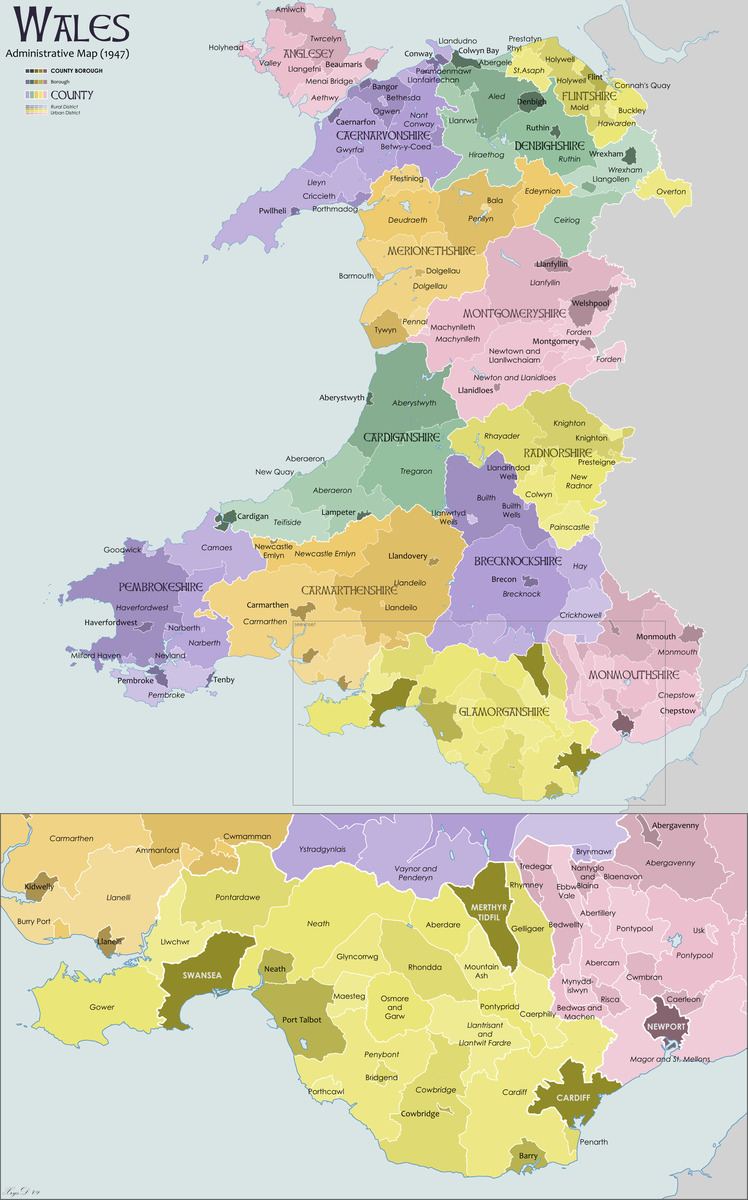 | ||
The history of local government Wales in a recognisably modern form emerged during the late 19th century.
Contents
Local Government Act 1888
From 1889 to 1974, counties made up of administrative counties and county boroughs were used for local government purposes. The counties were created by the Local Government Act 1888 (51 & 52 Vict, c. 41) based on the historic counties of Wales, but they were not entirely identical.
Administrative counties
The table shows the area and population of administrative counties in Wales as recorded at the censuses of 1891 and 1961.
(1)Renamed from Carnarvonshire, 1 July 1926
County boroughs
There were also a number of administratively independent county boroughs:
Local Government Act 1972: Counties and districts
In 1974, the existing administrative counties and county boroughs were abolished and replaced by eight new two-tier authorities, instead called 'counties' by the Local Government Act 1972 (1972 c. 70). These counties were sub-divided into lower-tier districts.
The counties were all given names in Welsh only, apart from the three in Glamorgan, which had English names as well as Welsh. The creation of these new administrative areas effectively separated the administrative function from the traditional counties, although in reality this had occurred in 1889.
When these two-tier counties were abolished in 1996, their names and areas were retained with slight modifications for some purposes such as Lieutenancy, and became known as the preserved counties of Wales. These were further amended in 2003 by S.I. 2003/974 to ensure that each unitary area is wholly within one preserved county.
Counties
- Gwent
- South Glamorgan
(De Morgannwg) - Mid Glamorgan
(Morgannwg Ganol) - West Glamorgan
(Gorllewin Morgannwg) - Dyfed
- Powys
- Gwynedd
- Clwyd
Districts
The counties were sub-divided into districts, these were:
1996
The redistribution of these districts into the current unitary authorities is as follows:
